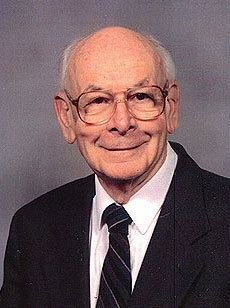1. Desktop publishing: the revolution comes
Desktop publishing is the result of a timely convergence of four symbiotic technologies: page-description programming, raster-image processing, laser printing and the Graphical User Interface; and its success in revolutionising not only the publishing prepress process but also electronic office communications can be credited to the belief and encouragement of an individual.
Jonathan W. Seybold, the revered 'father of computer typesetting', was a pioneer in developing computer applications and typesetting systems for the printing and publishing industries. His company, Rocappi, was founded in 1963 and, from the outset, its vision was one of technological advancement of the way in which computers could aid the mechanical printing process [1]. In 1971 Seybold launched The Seybold Report, a newsletter published amongst the publishing and design communities that documented in real time the industry's move towards digital revolution. It was this authoritative and influential reputation that placed him at the centre of the era's innovative core, providing a neutral observation point from which the concurrent development of many new technologies could be witnessed.
Beginning in 1981, and ending shortly after his death in 2004, the Seybold Seminars were biannual conferences and trade shows held for the electronic-publishing, printing and graphics industries, and, for almost a quarter of a century, they charted the progress, present and future, of digital technologies. By the inaugural conference in 1981, Seybold had become synonymous with computer typesetting and closely acquainted with the industry's key players and emerging innovations. Fascinated by advances being made in the newspaper industry (whereby for some time computer programmes had performed automatic, albeit relatively crude, hyphenation of text in prepress composition), he realised that computer coding could in theory drive the wider process of 'preparation, correction, manipulation and formatting of written text' for the entire publishing gamut [2].
In 1984, having surmised that the difficulties lay in producing aesthetically pleasing font output to rival and commercially succeed that of conventional phototypesetters, Seybold observed that [3]:
The more closely a system tries to approximate the true output type fonts on a display screen, and the more manipulation of line art and pictures which it permits, the more difficult it will be to support a variety of output image processors.
At the time, every typesetting manufacturer's output devices worked differently to one another: each phototypesetting machine contained different fonts, their unique selections making ownership of such equipment a limiting experience in terms of potential output, and the binary coding by which these fonts were incorporated into text would differ, greatly, between devices.
Investing in any one system was not only an expensive process but also a bind – a reliance on the manufacturer should anything go wrong, and a confinement to whatever proprietary fonts came with the machine.
By standardising a resolution-independent way of processing on-screen data to a universal output device, the limitations, costs and efficiencies of printing would be reduced, and the opportunity for creating just one set of code for use in multiple typesetting machines would simplify the entire print, production and prepress processes immeasurably.
Jonathan W. Seybold (1916 – 2004)
Notes
ROCAPPI: Research on Computer Applications in the Printing and Publishing Industries.
It was the North American newspaper industry that, due to its inherent need for fast turnarounds, first drove demand in the early 1970s for significant graphic arts system development (Seybold, 1984, p.360).
Reference: Seybold J., 1984. The world of digital typesetting. Media PA: Seybold Publications Inc. p.360
Tom O’Reilly worked in the Academic Books Production department of Cambridge University Press, 2007–2014.
This blog comprises excerpts from his book What You See Is What You Get: Desktop Publishing And The Production Revolution at Cambridge University Press (1980–1996).


